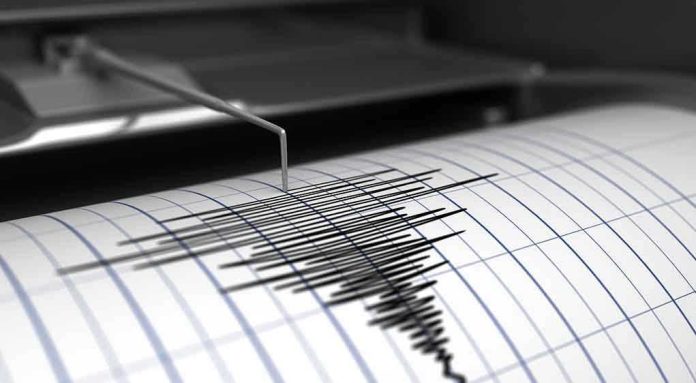
One night, the ground convulsed beneath Cebu, and within minutes, thousands of lives were ripped from routine into chaos—reminding every resident that, in the Philippines, disaster is only ever a heartbeat away.
Story Snapshot
- A 6.9-magnitude earthquake struck offshore near Bogo City, Cebu, killing at least 69 and injuring more than 140.
- Thousands were forced to flee as homes and infrastructure collapsed, with states of calamity declared in multiple municipalities.
- Rescue operations are ongoing amid power outages, aftershocks, and looming threats from severe weather.
- This tragedy followed weeks of typhoon damage, exposing the region’s chronic vulnerability and raising urgent questions about preparedness.
The Night Cebu Shook: Seconds that Changed Everything
Cebu’s calm was shattered by the violent jolt of a 6.9-magnitude earthquake. The epicenter, offshore near Bogo City, sent shockwaves through the heart of the Central Visayas. In those first paralyzing moments, walls buckled, power lines snapped, and the darkness that followed was broken only by cries for help and the sirens of first responders. Residents spilled into the streets, clutching children and whatever they could salvage, as aftershocks rolled beneath their feet. For thousands, home instantly became a memory and survival the only plan.
By dawn, the extent of the devastation became clear: at least 69 dead, over 140 injured, and nearly a thousand people displaced in Bogo City alone. The earthquake’s brute force mangled roads and bridges, cut off power to eight municipalities, and forced the suspension of classes in 46 towns. The Philippine Institute of Volcanology and Seismology (PHIVOLCS) issued a tsunami warning that was later canceled, but the panic lingered as aftershocks—379 by early counts—rippled through already traumatized communities.
A Humanitarian Crisis in the Shadow of Disaster
Local officials moved quickly to declare states of calamity in San Remigio, Tabuelan, and other hard-hit towns, unlocking emergency funds and ramping up relief operations. The National Disaster Risk Reduction and Management Council (NDRRMC) and Office of Civil Defense scrambled to coordinate evacuations, deploy medical teams from Manila, and assess the battered infrastructure. The Philippine Coast Guard and Air Force took to the air and sea, searching for survivors in collapsed homes and unreachable villages. In the chaos, stories surfaced of families torn apart, schools converted into makeshift shelters, and entire neighborhoods vanishing beneath heaps of debris.
Rescue workers faced an agonizing race against time, with every aftershock threatening to add to the casualty count. The specter of Tropical Depression Paolo, lurking offshore, only heightened the sense of urgency. For the survivors—many still reeling from recent typhoon devastation—the earthquake was a cruel reminder that in the Philippines, disaster rarely comes alone.
Why This Earthquake Exposed More Than Fault Lines
The Philippines’ location on the Pacific Ring of Fire makes seismic catastrophe a brutal certainty. Yet, the ferocity of this quake—arriving on the heels of Typhoon Bualoi and Super Typhoon Ragasa—exposed deeper vulnerabilities. Weeks of storm damage had already weakened infrastructure and frayed nerves. When the ground finally gave way, it was not just concrete that crumbled: disaster preparedness plans, supply chains, and public confidence all buckled under pressure.
The immediate economic toll is staggering. Damaged infrastructure will take months, if not years, to repair. Businesses face weeks of lost revenue, and families must rebuild from nothing. The social costs—trauma, displacement, the shock to children whose schools and homes disappeared overnight—are harder to tally but no less real. Local governments, now under intense political pressure, must deliver both short-term relief and long-term resilience. The national government’s ability to coordinate and fund these efforts will test the limits of its disaster response apparatus.
Expert Assessments and the Road to Recovery
Seismologists agree: shallow, offshore earthquakes near densely populated regions are a nightmare scenario. PHIVOLCS officials and international disaster experts stress that the high casualty count underscores the need for investment in early warning systems, robust building codes, and community training. The Philippines’ disaster history is long, but the lessons remain painfully fresh—especially for older generations who remember the 2013 Bohol quake, which killed over 200.
Academics and local leaders warn that climate-driven storms and earthquakes are compounding, not isolated, threats. Calls for more resilient infrastructure and national preparedness plans have grown louder, echoing across the battered provinces. The coming weeks will bring more than aftershocks: they will demand answers about why so many were at risk, and what must change before the next inevitable disaster strikes. For now, as search and rescue give way to rebuilding, the people of Cebu and the Central Visayas are left to count their losses—and brace for whatever comes next.
Sources:
ABC News: Offshore earthquake kills 69 in Philippines, officials say
ReliefWeb: Philippines Earthquake – GDACS, USGS, PHIVOLCS, NDRRMC, Media, ECHO Daily Flash












